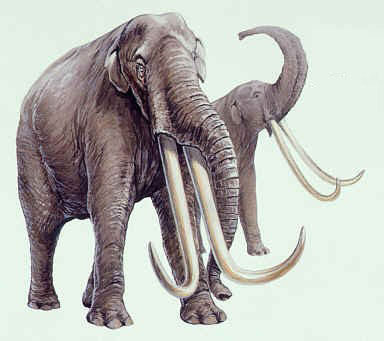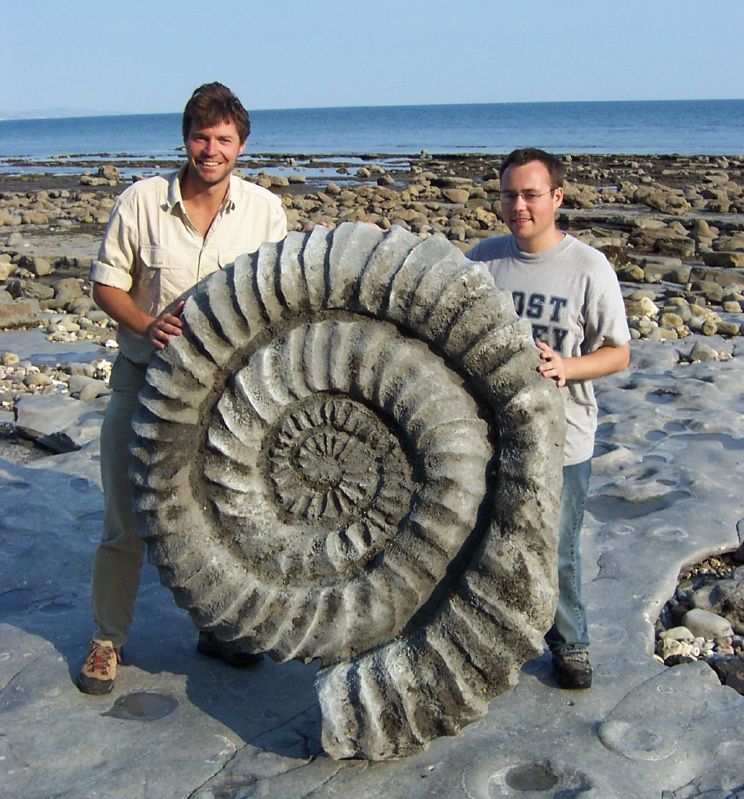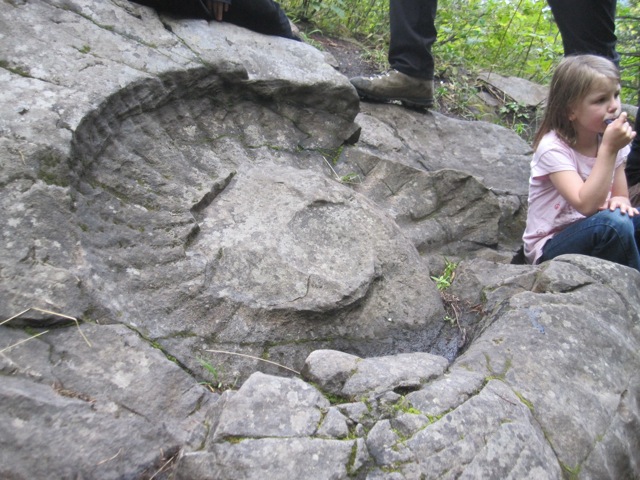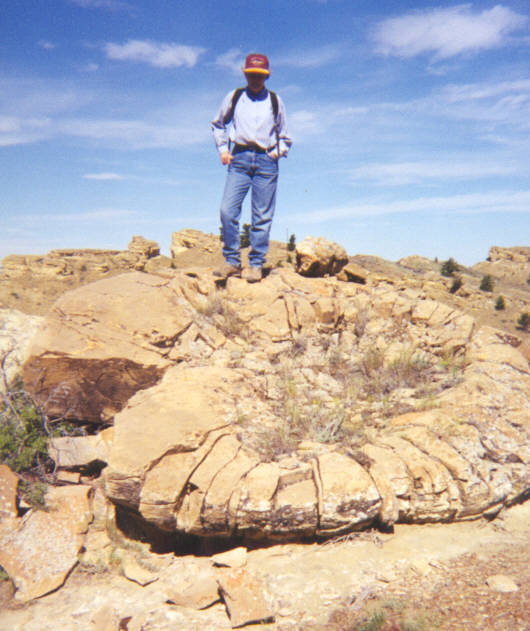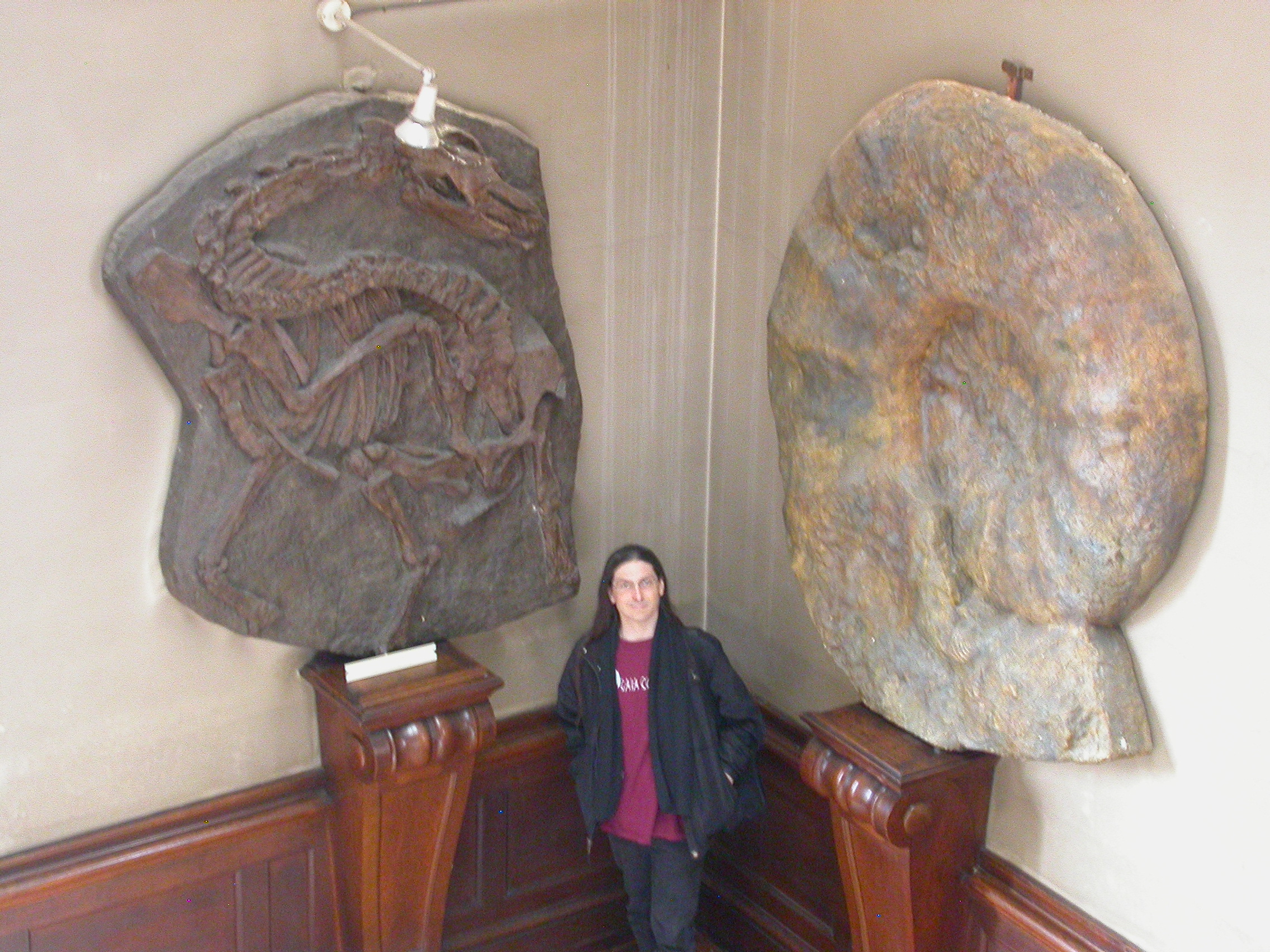You are currently browsing the tag archive for the ‘fossils’ tag.

What with all of the excitement in the world, it is easy to lose sight of the bigger picture…and of good things which are still happening during these troubled times. This morning at 7:50 a.m. EDT, NASA launched an Atlas V-541 rocket from Cape Canaveral Space Launch Complex 41. On board the rocket is a Martian lander containing the most sophisticated Martian rover yet “Perseverance” along with its robotic helicopter sidekick “Ingenuity.”
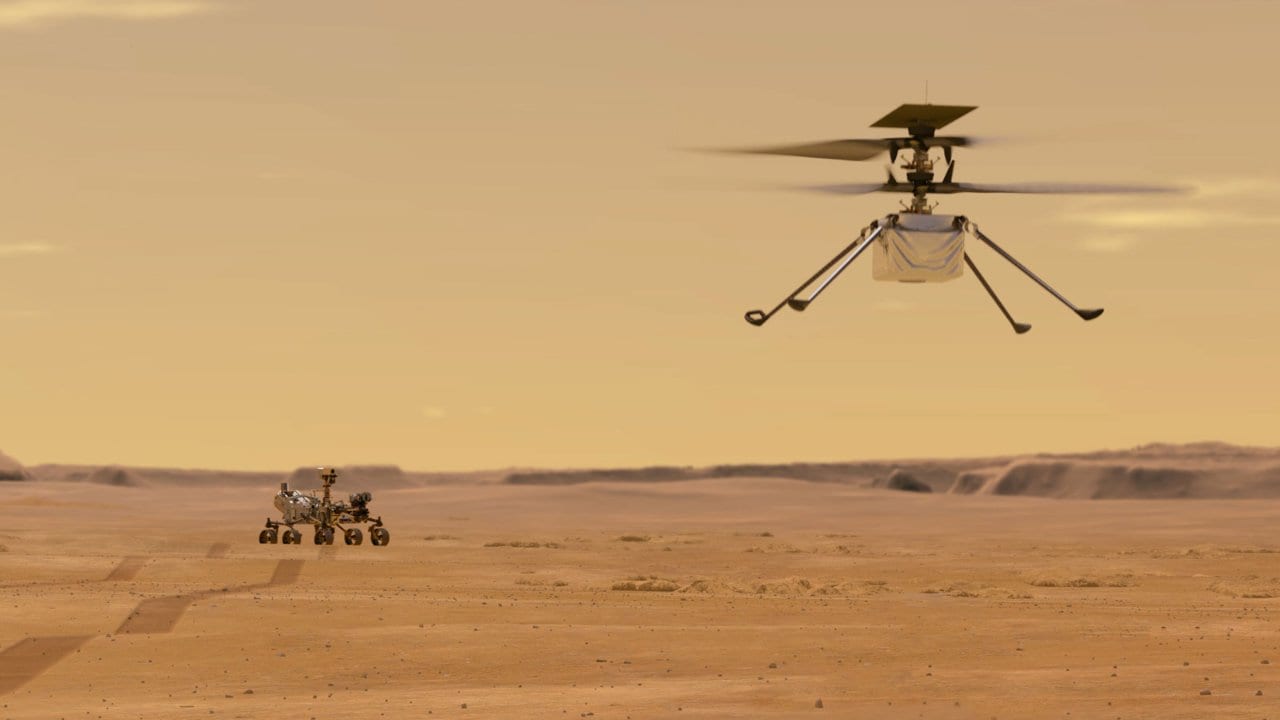
Artist’s Conception of Perseverance and Ingenuity on Mars
If the mission continues to go according to plan, the lander will reach Mars in February 2021. Coincidentally, Mars will be crowded that month, since a Chinese orbiter & lander, and a UAE orbiter are also slated to arrive. After much trial-and-error, I have faith in NASA’s sky crane landing system but it will be most interesting to see if the Chinese rover can “stick the landing”or if it is eaten by the ghosts of Mars (I hope not: humankind needs the Chinese data too, and NASA needs some competition to keep the creative juices and the congressional funding flowing).
The ultimate destination of the Mars 2020 mission is the Jezero Crater, a nearly circular crater 49 km (30 miles) in diameter. The ancient crater is now partially filled with sediments–including a fan delta of ancient clays. It is believed that if evidence of ancient life is to be found anywhere on Mars this is as likely a place as any to discover the ancient fossils.

Jezero Crater
Perseverance has onboard a 4.8 kilograms (11 lb) pellet of plutonium dioxide which will provide the vehicle (and the miniature helicopter) with abundant energy for traveling, communicating with orbiters/Earth, assaying rocks, and operating a core drill for gathering geological samples of ancient Martian rock. Additionally the rover will conduct material experiments concerning the potential toxicity of Martian dust and the production of pure oxygen from Martian atmospheric CO2. Perhaps most excitingly, the rover will also carefully organize and cache the precious samples it gathers in preparation for a future retrieval mission. Such a mission would involve landing, building and launching a Mars ascent vehicle from the Martian surface up to our proposed next generation Mars orbiter which would then load the samples on am Earthbound craft. So the Mars 2020 mission is a tremendous step towards discovering whether life ever gained a toehold on Mars AND towards building next-generation space faring capabilities (for the dull and incurious earthcentric crowd that always decries space exploration–as though Earth is located somewhere other than space!– it should be noted that such engineering breakthroughs generally confer military, technological, and economic supremacy here).

Also, special thanks to our brilliant Norwegian, Spanish, French, and Italian friends!
So best wishes for the entire armada which has left our planet this month headed for Mars, but particular good wishes to Perseverance and Ingenuity! Let’s hope we can discover some perveverance here to make it all the way to February 2021 (right now that sounds like it might as well be some HG Wells date in the impossible future).

Happy Birthday to Mary Anning (21 May 1799 – 9 March 1847). Mary’s life was a difficult one. Her father was a poor cabinet-maker in Lyme Regis (a coastal town in Dorset, England) who supplemented his income by selling strange petrified shells and stone bullets which he pried out of a nearby sea cliff. Mary’s parents had ten children, but only Mary and her brother survived past early childhood. Her name was a hand-me-down from an older sister who had burned to death at the age of four. When Mary was 15 months old, she and three neighbors were under a tree when it was struck by lightning and only Mary survived. Her father died while Mary and her brother were young and they kept the family afloat by selling curiosities pried from the sea cliffs. This was dangerous business: Mary’s beloved terrier Tray was crushed in a rockslide (he’s up there sleeping with the ammonites in the painting) and Mary narrowly avoided this fate herself on multiple occasions. Additionally, living so close to the sea carried further perils: the family nearly drowned from a flood during a great storm. Mary Anning died of breast cancer at the age of 47. Her final years were marked by agonizing pain from the condition which she self-treated with laudanum (which caused the community to gossip about her morals).
This is a pretty bleak biography (although in no way atypical for a working-class woman from early industrial Great Britain). So why are we writing about Mary 172 years after her death anyway? Mary Anning was a great pioneer of paleontology, geology, ichthyology, ecology, and invertebrate zoology. The luminaries of the English geology community relied on her indomitable fieldwork to frame their conclusions about the history of living things and to stock their museums with specimens. Mary was a religious dissenter and the daughter of a cabinet-maker in an age when geology was the near-exclusive preserve of well-to-do Anglican gentlefolk (the Geological Society of London did not even allow women to attend meetings as guests). Yet she kept informed of the scientific literature of her day and she dissected fish and invertebrates as to better understand the nature of her excavations and discoveries. Above all, Mary Anning actually discovered the fossils which others wrote about–so she had insights and knowledge which were occluded from armchair scholars. Charles Lyell (the father of geology) wrote to her asking her opinions about cliff erosion. Mary proposed a theory to William Buckland that some of the fossils she discovered were ingested by ichthyosaurs and the remains excreted (a concept which fascinated Buckland and became the central focus of his work). In a fair world she would have an alphabet of letters after her name and be immortalized as a statue on a plinth beside the statues of Darwin and Lyell. Even in our fallen world, she is revered as one of the founders of the natural history and life science disciplines (although many biographies about her concentrate on the sad exigencies of her life rather than on the extraordinary discoveries she made, a tradition which I have somewhat followed).
The cliffs which Mary relied on for specimens were part of a geological formation known as the Blue Lias. These layers of limestone and shale were a shallow seabed of the Tethys Ocean during the Jurassic period (about 210–195 million years ago). The curlicues and stone bullets were fossil ammonites and belemnites, but Mary had a knack for finding the much rarer remains of hitherto unknown creatures such as ichthyosaurs, pterosaurs, plesiosaurs and other ancient marine fauna.
In the early 19th century a debate was raging between learned churchmen who knew for certain that God’s perfect creation could never be diminished and gentlemen geologists who believed that there had once been animals which were gone from earth…”extinct” as they called this new concept. Mary’s fossils of bizarre giant sea crocodiles and lizard dolphins gave concrete evidence to the ur-paleontologists (who were indeed proven right). Her discoveries were seminal for the discovery of paleontology itself and paved the way to the understanding that the world’s ecosystems were once very different indeed from what they are like now. These pieces of knowledge helped towards an understanding of the true age of the Earth and ultimately made Darwin’s discoveries possible.

Here is another painting of Mary, by the greatest living fish-artist, Ray Troll. Troll shows Mary with fleshed-out versions of the creatures she discovered (note the ichthyosaur swallowing an ammonite). We owe an enormous debt to Mary Anning. Her contributions were under-appreciated in her day (when only the most learned gentleman scientists…and Mary… had inklings of the real nature of natural history and what her super sea-monsters connoted ), but those discoveries undergird our understanding the nature of the planet and of life itself.
Occasionally in the geological past, extraordinary circumstances resulted in the near-perfect preservation of an entire ecosystem. These astonishing fossil beds are known as Lagerstätten (one of the first such finds was in Germany) and they provide one of the best sources of information about life on this planet. A particularly rich Lagerstätten is located in the arid scrubland of Riversleigh in northwest Queensland, Australia: there fossils from the Oligocene and Miocene epochs are preserved in uncompressed limestone (which allows paleontologists to recover 3 dimensional skeletal remains). During the late Oligocene, Riversleigh was a lush and vibrant rainforest filled with an incredible profusion of bizarre life forms. When the Oligocene ended, the region dried into grasslands (and the climate continued to dry out further in subsequent epochs until the present, when the area is a near desert).
All of this is backstory to a remarkable recent discovery. This week paleontologists studying the bats, snakes, and strange tropical marsupials of Riversleigh made an unexpected discovery–a giant hunting platypus twice the size of the living species. This big predator, Obdurodon tharalkooschild, was a formidable meter long (3 foot) creature with sharp teeth for grabbing crayfish, amphibians, aquatic reptiles, and fish. The newly discovered platypus lived in the long-lost rainforests of Queensland. It was a generalist with a much larger diet than the somewhat specialized modern platypus.
Monotremes (platypuses & the more recently evolved echidnas) are an extremely ancient branch of mammalian life which date back at least to the Jurassic–and more likely to the Triassic epoch or earlier. Platypuses are believed to have evolved in what is now South America and then spread to Antarctica and finally to Australia. The amazing giant hunting platypus indicates that there were hitherto unexpected branches of platypus evolution. I wonder if Obdurodon tharalkooschild was toxic (like the modern platypus). I also wonder what strange monotreme fossils lie beneath the ancient ice of Antarctica.
My favorite mammals are the mighty proboscideans—elephants, mammoths, mastodons, gomphotheres, moeritheriums, and so on. I have not written about them more because the only proboscideans we know a lot about are the elephants–and elephants are complicated—they are smart and they have human length lives of great social complexity, all of which makes them hard to write about. Additionally elephants are tragic—their populations keep shrinking away as humankind grasps for ever more land and poachers kill the great sentient giants for their ivory. Yet elephants still have a perilous chance to keep on living. What is even sadder than the senseless slaughter of the magnificent elephants are the other proboscideans, which have vanished one by one from earth. Everyone knows about the woolly mammoth and Cuvieronius, the new world gomphothere, but the last non-elephant proboscideans to have died out were even more contemporary.
The stegodons (from the extinct subfamily Stegodontinae) evolved in Southeast Asia approximately eleven and half million years ago. They lived in large swaths of Asia throughout the Pliocene and Pleistocene epochs and they survived in Indonesia deep into the Holocene epoch. Radio-carbon dating has dated the last living stegodons to 2,150 BC. The giants died after the pyramids were built at Giza and great cities had begun to sprout up in Mesopotamia and along the Indus valley.
Stegodons looked much like elephants—a resemblance which has caused much taxonomical confusion. Paleontologists once believed elephants descended from stegondons but It seems now that both stegodons and modern elephants descended from Gomphotheriidae (a sister group to the mammoths). Stegodons had different molars and their tusks were so close together that their long trunks draped over the sides. There were many species of stegodons, the largest of which were among the largest of proboscideans, far more immense than today’s two elephant species. The biggest stegodont were 4 m (13 ft) high at the shoulders and had a body length of 8 m (26 ft) which does not even count their 3 meter (10 foot) tusks!
Modern humans reached Southeast Asia 50,000 years ago so we lived in proximity with the stegodons for some time before they vanished. Certain species of stegodons reached isolated Indonesian islands where, over generations, they shrank into dwarf forms. These tiny stegodons were hunted by Homo floresiensis, which seems to have been a dwarf species of human (although the scientific community has not reached consensus concerning the nature of Homo floresiensis). Imagining tiny versions of humans hunting tiny versions of huge elephant-like creatures boggles the mind! I am profoundly sorry the stegodons dwarf, giant, or otherwise could not have held on for a few more millennia. I would love to have seen them—or by 4000 years ago were they already as the Saola is now—ever retreating from a world that did not seem to fit them?
In the desolate desert 150 kilometers southwest of Cairo there is a fearsome arid valley (wadi) of cliffs, carved buttes, and sandblasted erratic boulders. The bleached landscape has an otherworldly emptiness as though it were located on a lifeless alien planet, though if you look closely, the desert is filled with austere furtive life like dorcas gazelles, tiny sand colored lizards, cobras, scorpions, and fennec foxes. The name of the place is even more otherworldly—“Wadi Al-Hitan” which is Arabic for “valley of the whales” and although the great smooth rocks buckling out of the sand might momentarily be taken for the backs of huge whales, the utter absence of the ocean (or of water of any kind) makes the name seem fanciful. The nearby Mount Garet Gohannam (which means mountain of hell because of the way it glows like flames at sunset) seems to be more aptly named.
However the name of Wadi Al-Hitan is remarkably literal–for the valley contains the remains of hundreds of huge ancient cetaceans which died in the Eocene and were fossilized in the yellowish sandstone. Forty million years ago the valley was a marine lagoon. Although the remains of numerous sirenians, sawfish, sharks, rays, sea turtles, marine crocodiles, sea snakes, and even swamp dwelling moeritheriums have been discovered in the wadi, the valley takes its name from the most spectacular and numerous fossils which belong to four different species of primitive whales. The most commonly discovered fossils belong to Dorudon, which was 3-5 meters long (9-15 feet) and fed on fish and mollusks, and to Basilosaurus, which was 15-22 meter (50-72 foot) and fed on everything else in the ocean.
Basilosaurus was first discovered in Louisiana in the early 19th century. Its immense size and serpentine form initially convinced naturalists that it was a marine reptile and they misnamed the creature Basilosaurus (which means “king lizard”). The mistake soon became obvious and Basilosaurus was classified among the Archaeoceti, a paraphyletic suborder of the cetaceans, however the giant kept its dinosaur name. Different species of Basilosaurus flourished in oceans worldwide during the wet, tropical Eocene and, even though they were obviously very adept at ocean living (indeed rising to the top of the food chain) the creatures betray vestiges of terrestrial living which modern whales have entirely dispensed with. Not only do Basilosaurus fossils have teeth and jaws which retain reatures from their artiodactyl ancestors, they also have tiny vestigial back legs a mere half meter in length (which would scarely help a 22 meter animal get around). Additionally Basilosaurus was different from modern whales in that it probably moved with eel-like horizontal thrashing of its long tail (modern whales move their flukes vertically). Basilosaurus probably did not dive very deeply, but moved about near the surface of the oceans hunting for smaller marine animals.

Basilosaurus from “Life in the Ancient Seas Exhibit” at the Smithsonian Institution, National Museum of Natural History
Although Wadi Al-Hitan was discovered by Europeans in 1902-1903, some archaeologists and anthropologists have speculated that it was known long before that and have been irresistibly drawn towards comparing basilosaurus with the giant crocodiles and earth spanning serpent gods which populate ancient Egyptian cosmology.
A few weeks ago Ferrebeekeeper featured a post about belemnites, extinct cephalopods from the Mesozoic which teemed in immense schools through the reptile-haunted oceans of that bygone era. Yet belemnites were certainly not the only cephalopods which swam in the Mesozoic seas. Numerous shelled cephalopods—the ammonites—were widespread in every sort of marine habitat. Ammonites are personal favorites of mine so I am not going to write a comprehensive explanation/description of the subclass. Instead I wish to provide you with an idea of how big ammonites could get by providing a few pictures of large ammonite fossils which have been discovered. Imagine these monsters jetting through the water with huge tentacles and big intelligent eyes scanning for giant predatory reptiles and you will have a better idea of the Mesozoic Oceans!








